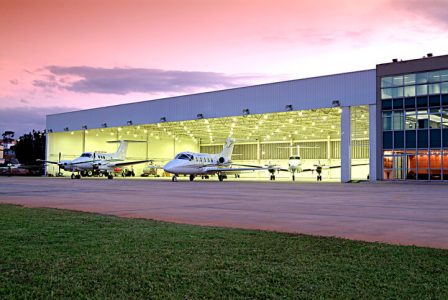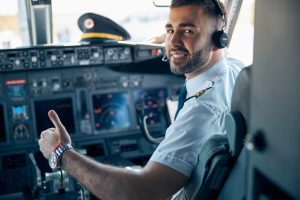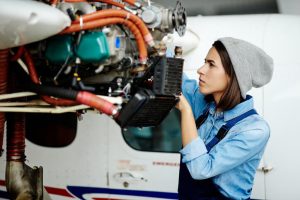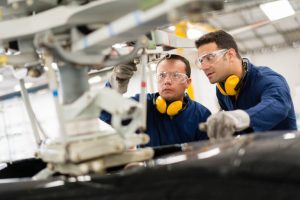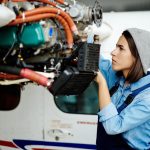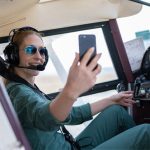Hangar Rash Prevention with New Technology
Hangar rash, the unfortunate damage planes can sustain while being moved in and out of hangars, costs nearly $150 million in damages per year. Fortunately, California-based company, Hangar Safe, has developed an AI-powered protection system that will be available for installation later this year.
The preventative system uses patented technology, installed sensors, and cameras, providing ground personnel with audio and visual warnings of potential collisions. This technology offers an added layer of protection without the need for more ground handlers or training.
This innovative system is the first advancement in hangar safety in decades and could potentially become a standard piece of equipment in every hangar in the country, making it possible for you to take off without a worry of delayed flight due to a dent on your aircraft.
Other Ways to Help Avoid Hangar Rash
The use of technology, wing walkers, and effective communication is crucial for preventing hangar rash and avoiding damage to the aircraft. Proper guidelines and procedures must be established and followed, and regular training should be provided to ensure compliance.
Here are some ways pilots and companies can help avoid hangar rash:
- Technology: Various technologies can help prevent hangar rash, including cameras, sensors, and virtual guidance systems. These technologies can help pilots safely navigate tight spaces and avoid obstacles when moving the aircraft.
- Wing walkers: The use of wing walkers can also help prevent hangar rash by providing an additional set of eyes to assist the pilot in maneuvering the aircraft in and out of the hangar.
- Communication: Effective communication between the pilot and wing walker is essential for preventing hangar rash. Pilots should follow the wing walker’s instructions closely, while the wing walker should be aware of the aircraft’s clearance limits and communicate any obstacles that may impede safe movement.
- Guidelines and Procedures: Specific guidelines and procedures must be established and followed to ensure safe movement of aircraft in and out of the hangar. These guidelines should take into account the specific dimensions and layout of the hangar space and should be reviewed regularly to ensure compliance.
- Training: Pilots and wing walkers should receive regular training on hangar rash prevention techniques, including the use of technology, wing walkers, and effective communication.
- Recommended Products and Equipment: The use of specialized equipment such as tow bars, chocks, and wheel stops can also help prevent hangar rash. Pilots and wing walkers should utilize these products to ensure safe movement of the aircraft.
Hangar rash is an expensive problem. It not only causes hundreds of millions of dollars’ worth of damage annually, but it can also be dangerous for pilots and ground personnel. Using technology and wing walkers, along with effective communication, guidelines, procedures, and training, can help pilots avoid hangar rash when moving aircraft in and out of hangars. The benefits of these practices are significant, as they help prevent damage to the aircraft and ensure the safety of pilots and wing walkers during movement.
RELATED CTS TRAINING

